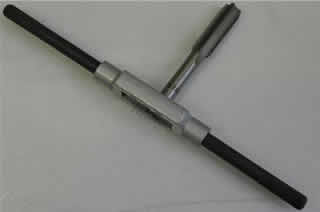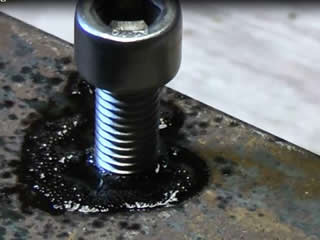To create a female thread in a piece of material (normally metal) a tap and tap wrench are normally used, this technique is normally referred to as tapping metal or to tap metal. When tapping metal it is important to use the correct type of tap for the item that you are drilling and also the correct type of lubricant for the particular material that you are tapping.
Tapped holes are useful for bolting items, although careful consideration has to be given to the application and in some cases a nut on the back of the work piece may be more suitable especially if the bolts are prone to shearing off. A sheared bolt in a tapped hole can often be difficult to remove and can take considerable time whereas if a nut is used you can just replace the nut and bolt if the bolt shears!
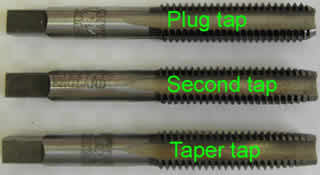
Here we have a set of taps, these are sold in sets of three. The first tap to be used would be the taper tap as this has the largest taper of the 3 taps, then the hole would be tapped with the second tap (often called the intermediate tap) and then finally the plug tap (often called a bottoming tap).
Taps can be made from carbon steel or high speed steel (HSS). HSS taps are normally the best quality and are the dearer of the two sets.
All taps designed to be used by hand have a square on the end which will fit into a tap wrench. The makers name and tap size is also found on the shank of the tap.
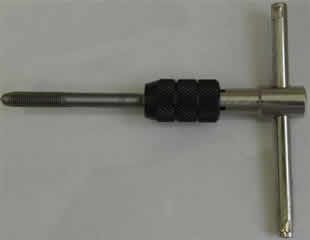
There are several different types of tap wrench available. This tap uses a chuck to hold the tap, this type is also available in a ratchet version which is useful when tapping in tight places.
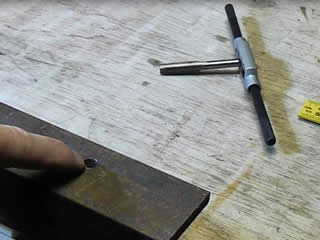
To tap an hole in metal you first need to drill the correct size hole. This information can be found in a ZEUS guide or for metric ISO threads there is a guide on this page-
Tap and Die.
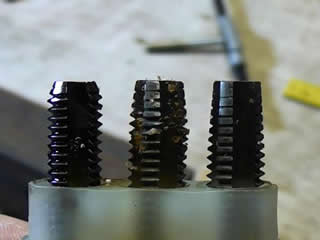
Here we have a set of dies. To tap a hole we need to start with the taper tap, which is on the right of this picture. This tap should always be used first as it has the longest taper (or lead) which will help the tap to get started in the material.
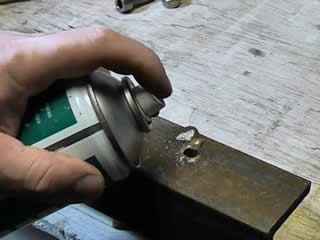
Some metals require a lubricant when tapping. Here we are using drilling and tapping fluid which should be used when tapping steel. Not all materials need a lubricant, Brass and cast iron for example are often called self lubricating metals and require no lubricant when tapping.
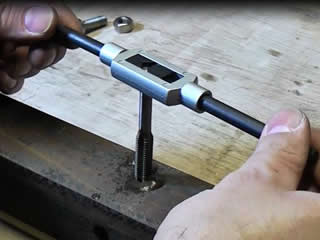
Once the tap is fixed into the tap wrench you can start to tap the hole. Insert the taper tap into the hole (keeping it straight) and apply a downwards pressure whilst turning the tap wrench in a clockwise direction. For every two turns in a clockwise direction you should reverse and do one turn in an anti-clockwise direction to break off the chip.
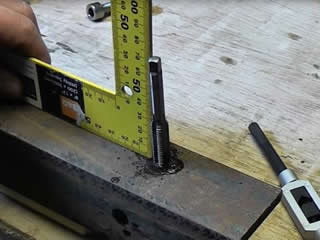
Once the tap has started to bite into the material you should remove the tap wrench and then check the tap is square in the hole by using a square, the tap should be checked in all directions to ensure the tapped hole will be square.
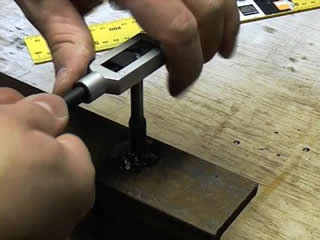
Replace the tap wrench and turn the wrench in a clockwise direction whilst applying downwards pressure, ensuring that for every two turns clockwise you do one turn anti-clockwise to break off the chip.
Continue doing this until you are right through the material or the tap is all the way in.
If the tap can be wound in so that the top threads exit the bottom of the material you do not need to do anything else, but if the material is thick or if it is a blind hole you need to repeat this process using the second tap and then the plug tap.
Be careful when tapping a blind hole as it is extremely easy to break the tap in the hole if you try and go too deep!



